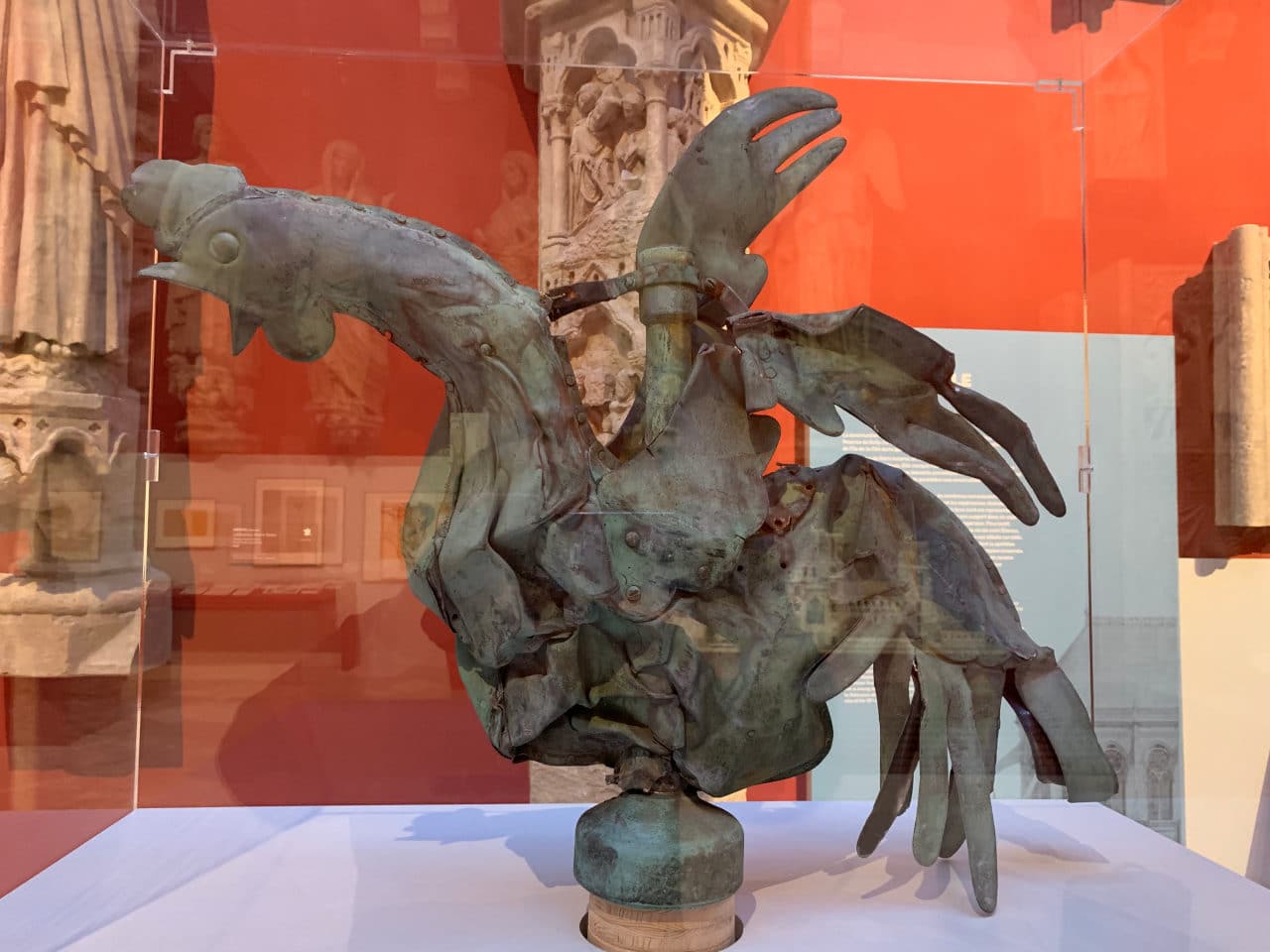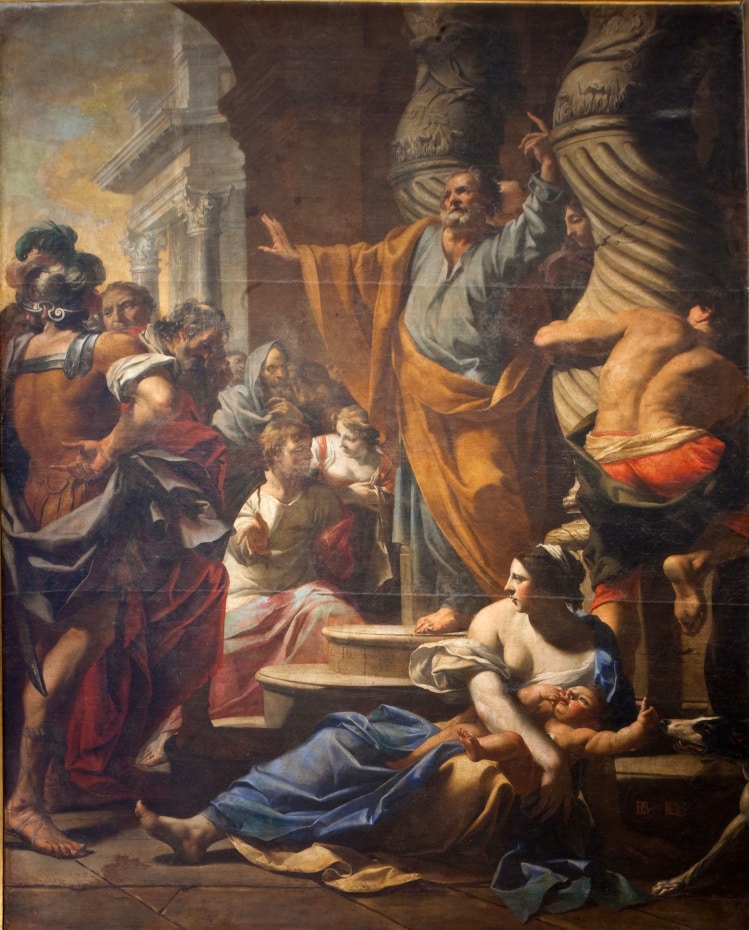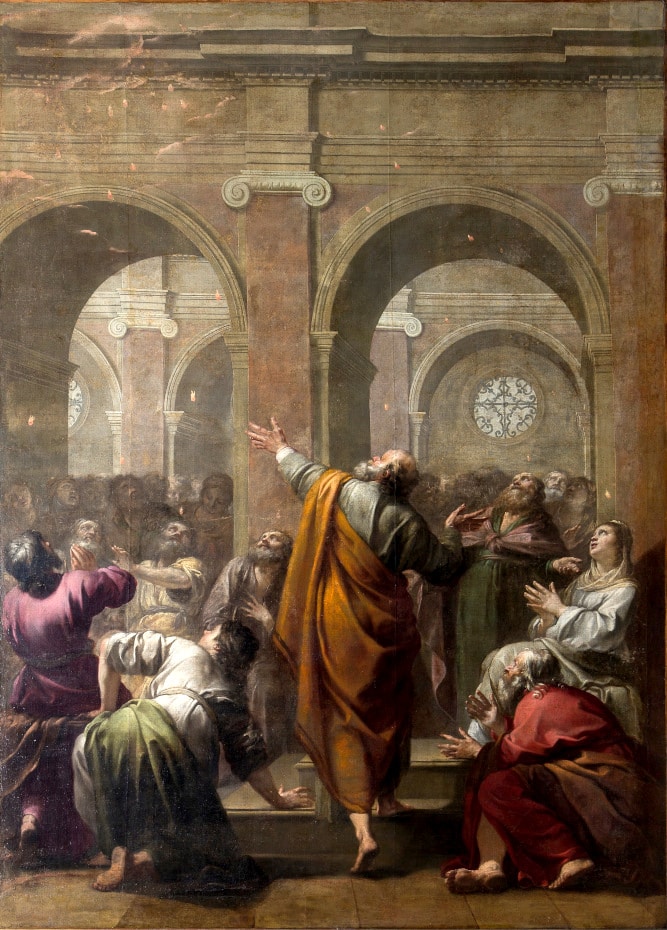Notre-Dame Cathedral in Paris is famous for its stunning architecture, intricate sculptures, and ornate stained-glass windows. However, one of the most fascinating and lesser-known features of the Cathedral is the rooster that once sat atop the spire. In this post, we will explore the history and significance of this intriguing feature.
The spire was topped with a statue of a rooster, The rooster is considered a symbol of the French people because of the play on words of the Latin gallus meaning Gaul and gallus meaning coq, or rooster. The rooster contains three relics: a small piece of the Crown of Thorns, a relic of St. Denis, and a relic of St. Geneviève, the patron saint of Paris. The piece of the Crown of Thorns was supposedly put into the rooster by Viollet-le-Duc himself in 1860.
During the fire that devastated the Cathedral on April 15, 2019, the spire collapsed, and the rooster was thought to be lost. However, after the debris was cleared, the rooster was discovered intact, and the relics it contained were recovered. This remarkable find provided a glimmer of hope amid the destruction, and it has since become a symbol of resilience and hope for the people of Paris and the world.
The history of the rooster on top of the Notre-Dame Cathedral spire goes back much further than the 19th century restoration, however. In fact, roosters have been used as symbols of vigilance and protection in Christianity for centuries. According to legend, Saint Peter, one of the twelve apostles of Jesus, denied knowing him three times before the rooster crowed, fulfilling Jesus' prophecy. This event is depicted in various works of art, including a painting by Italian artist Caravaggio.
Roosters were also commonly used as weathervanes in medieval Europe. They were believed to have the power to detect changes in the weather and were often placed on top of churches and other buildings to help people prepare for storms and other weather events. The rooster on top of the Notre-Dame Cathedral spire served this function as well, but it also had a deeper significance due to the relics it contained.
The rooster is not the only animal featured prominently on the Notre-Dame Cathedral. The Cathedral is also home to numerous gargoyles and grotesques, each with their own unique history and symbolism. These ornamental sculptures often served practical functions, such as draining water from the roof, but they also had spiritual significance, representing both good and evil.
The rooster on top of the spire, however, was more than just an ornamental feature or a practical weathervane. Its significance was rooted in the religious and cultural traditions of France, as well as the history of Christianity more broadly. The fact that the rooster survived the devastating fire that nearly destroyed the Cathedral has only added to its mystique and significance.
Status of the Rooster
The rooster miraculously survived both the fire and the subsequent collapse of the spire. It is currently on display in the Cité de l'Architecture et du Patrimoine museum in Paris.



